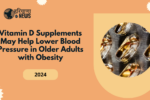Breast cancer is often associated with women over the age of 50, but it is increasingly affecting younger women in their 20s, 30s, and 40s. This form of cancer develops when breast cells begin to grow abnormally, leading to the formation of tumours. The tumour may be malignant, posing serious risks to a person’s health and well-being.
Detecting breast cancer in its earliest stages is crucial for effective treatment. For younger women, recognizing the warning signs and symptoms can ensure timely medical intervention. Below are four critical red flags that should prompt immediate attention.
Changes in Breast Size or Shape
Women between the ages of 20 and 45 may notice alterations in the size, shape, or symmetry of their breasts. These changes could include swelling, shrinking, or noticeable asymmetry between the two breasts. While some variations are natural, persistent or sudden changes should be evaluated by a healthcare professional. Early examination can help rule out potential complications or catch the condition early.
Presence of a Lump in the Breast or Underarm
The appearance of a lump or a thickened area in the breast or armpit is a significant symptom that should not be ignored. Whether the lump is large or small, its presence can indicate an underlying issue, such as breast cancer. Women are encouraged to perform regular self-examinations to familiarize themselves with their breasts’ normal texture and appearance. This practice makes it easier to detect any unusual lumps and seek medical advice promptly.
Alterations in Breast and Nipple Appearance
Certain physical changes to the breast and nipple can serve as indicators of breast cancer. These may include:
- Redness or discolouration of the skin.
- Dimpling or puckering, resembling the texture of an orange peel.
- Nipples that become inverted or change their natural position.
- Discharge from the nipple, particularly if it is bloody.
Such symptoms should not be dismissed as minor irritations. Consulting a doctor for a thorough evaluation is essential if these changes occur.
Persistent Breast Pain and Tenderness
If you experience ongoing pain or tenderness in your breasts that is unrelated to your menstrual cycle, it could be a sign of a more serious condition. While occasional discomfort is common for many women, persistent pain warrants professional attention. Addressing this symptom early can lead to faster diagnosis and treatment, improving the chances of a positive outcome.
 Discovering the Ultimate Benefits of Amla Oil for the Best Haircare Experience
Discovering the Ultimate Benefits of Amla Oil for the Best Haircare Experience
 A 30-Minute Bodyweight Workout That Requires No Equipment: Are You Up for the Challenge?
A 30-Minute Bodyweight Workout That Requires No Equipment: Are You Up for the Challenge?
 50% of Delhi Government Employees to Work from Home Amid Alarming Air Pollution Levels, Announces Gopal Rai
50% of Delhi Government Employees to Work from Home Amid Alarming Air Pollution Levels, Announces Gopal Rai
 Vitamin D Supplements May Help Lower Blood Pressure in Older Adults with Obesity
Vitamin D Supplements May Help Lower Blood Pressure in Older Adults with Obesity
 10 Health Benefits of Eating Spinach in Winter Daily Diet
10 Health Benefits of Eating Spinach in Winter Daily Diet





Importance of Early Detection
Dr. Mrunal Parab, a surgical oncologist at TGH Onco Life Cancer Center, emphasizes the importance of regular breast self-examinations and timely medical consultations. If any of these symptoms are observed, immediate action should be taken. Mammograms and other diagnostic tools, as recommended by healthcare providers, can help identify cancer at an early stage when it is most treatable.
Key Takeaways:
- Regular self-examinations enable women to monitor their breast health.
- Timely medical consultations can lead to early detection and increase survival rates.
- Ignoring symptoms can delay treatment and impact outcomes.
A Lifesaving Reminder
Prompt detection and treatment of breast cancer can make a significant difference in a patient’s prognosis. Women are encouraged to take charge of their breast health by staying vigilant and seeking medical advice whenever symptoms arise.
Disclaimer: This article serves as a general guide and does not replace professional medical advice. For specific concerns or questions about your health, consult a qualified healthcare provider.
Click here to know more.






